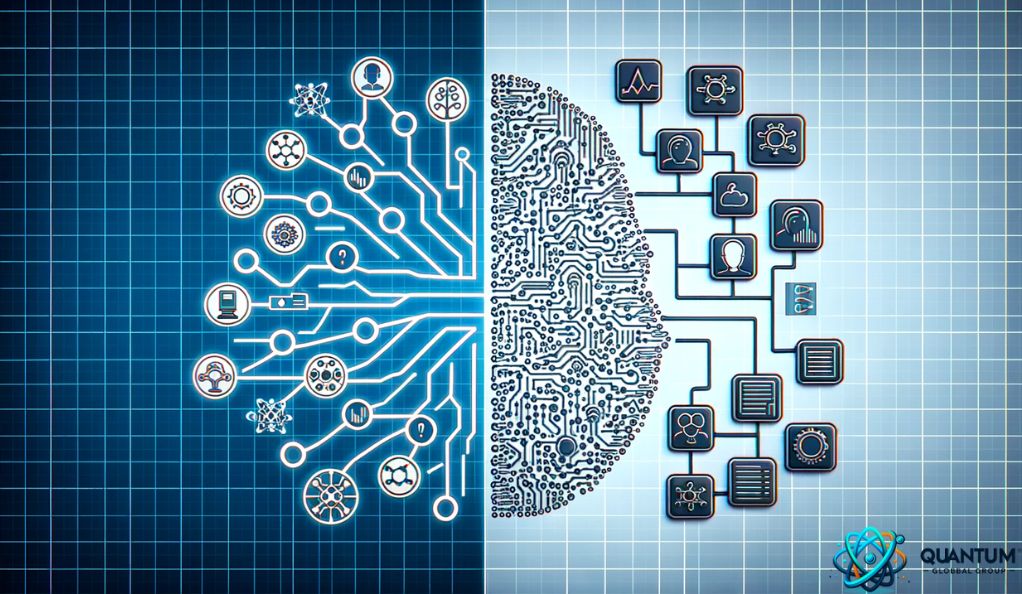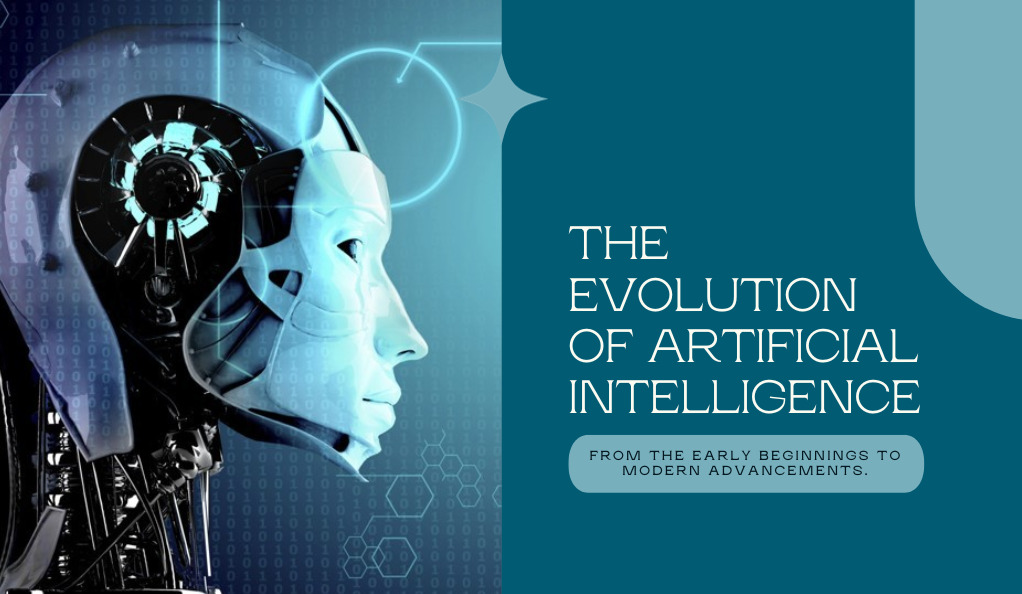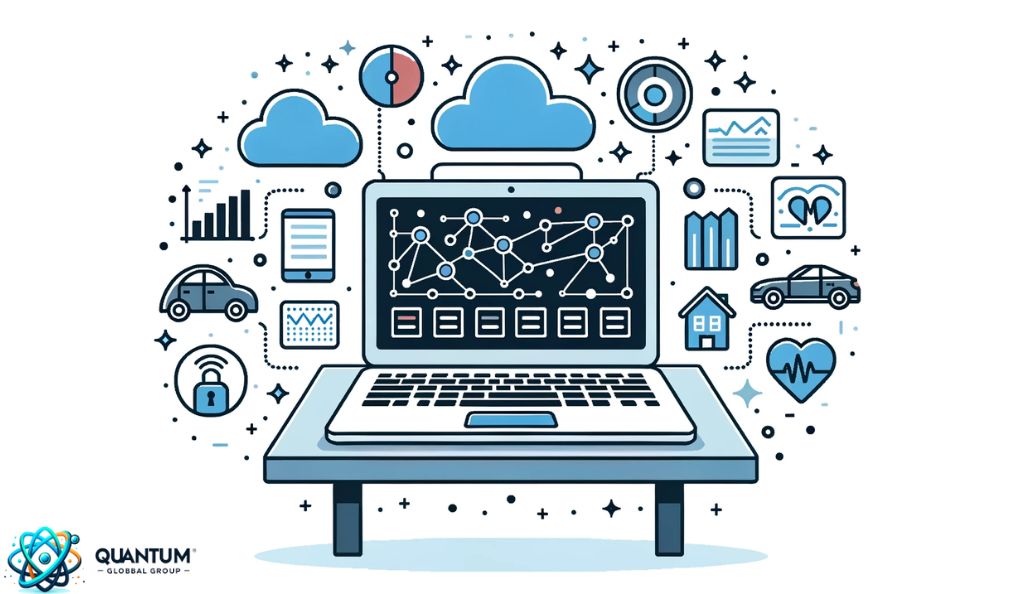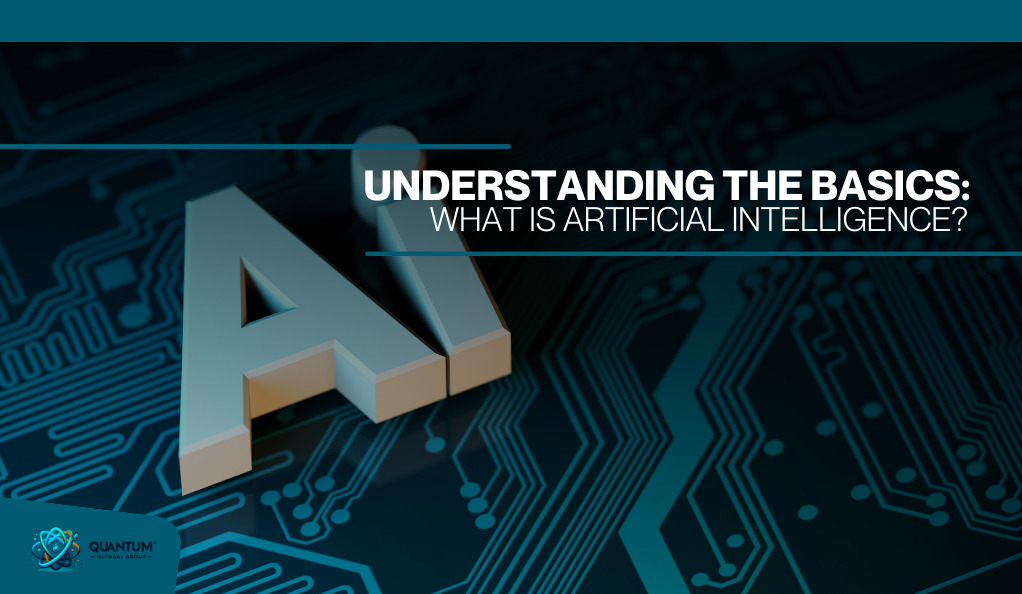In the field of AI, two terms frequently encountered are machine learning and deep learning. These technologies are revolutionizing industries and transforming how we interact with technology. While closely related and used in various applications, machine learning and deep learning have distinct characteristics and applications. This article aims to clarify these technologies, highlighting differences and real-world uses.
The Essence of Artificial Intelligence
Artificial Intelligence is a broad field of computer science focused on creating smart machines capable of performing tasks that typically require human intelligence. It encompasses various subfields, including machine learning and deep learning, which are methodologies used to achieve AI.
Machine Learning: A Subset of AI
Machine Learning (ML) is a subset of AI that enables systems to learn and improve from data without explicit programming. It involves recognizing patterns in data and making intelligent decisions. ML algorithms fall into supervised, unsupervised, and reinforcement learning categories.
Deep Learning: Taking it a Step Further
Deep Learning (DL), a subset of machine learning, uses neural networks with multiple layers to simulate the human brain’s data learning process. It powers various AI applications, including image and speech recognition, language translation, and game playing, among others.
| Aspect | Machine Learning | Deep Learning |
|---|---|---|
| Purpose and Context | Used in various AI applications | Primarily applied to tasks with large datasets |
| Feature Engineering | Requires manual feature extraction | Automatically learns feature vectors |
| Domain Expertise | Relies on domain expertise | Less reliant on domain expertise |
Understanding Machine Learning
Machine Learning (ML) is a dynamic field that has its roots in statistics and computer science. It revolves around the idea that systems can learn from data, identify patterns, and make decisions without human intervention. The essence of machine learning is not just to make decisions based on data but to make those decisions better over time.

Definition and Basics of Machine Learning
At its core, machine learning is a method of data analysis that automates analytical model building. It’s a branch of artificial intelligence based on the idea that systems can learn from data, identify patterns, and make decisions with minimal human intervention.
There are three main types of machine learning:
- Supervised Learning: This is where the algorithm is trained on a pre-defined set of examples, which helps the machine to learn and produce the desired output when given new data.
- Unsupervised Learning: Unlike supervised learning, in unsupervised learning, the algorithm is given data without explicit instructions on what to do with it. The system tries to learn the patterns and the structure from the data without any labeled responses to guide the learning process.
- Reinforcement Learning: This is a type of machine learning where an agent learns how to behave in an environment by performing actions and receiving rewards or penalties in return.
Common Algorithms and Applications
Machine learning encompasses a vast array of algorithms, each suited for specific tasks. Some of the most common algorithms include:
- Linear Regression: Used for predicting numerical values.
- Logistic Regression: Used for binary classification problems.
- Decision Trees and Random Forests: Used for classification and regression tasks.
- Support Vector Machines (SVM): Used for classification problems.
- Neural Networks: Though they are more associated with deep learning, they can be used in traditional machine learning tasks.
- K-Means: Used for clustering unlabeled data.
- Naive Bayes: Used for classification tasks based on the Bayes theorem.
Delving into Deep Learning
Deep Learning (DL) represents the cutting edge of artificial intelligence, drawing inspiration from the human brain’s neural networks. It involves layers of algorithms, known as neural networks, which are designed to mimic human cognition and interpret patterns in data.
Definition and Core Concepts of Deep Learning
Deep Learning is a subset of machine learning that employs neural networks with multiple layers (deep neural networks) to analyze various factors of data. The “deep” in deep learning refers to the number of layers through which the data is transformed. More layers allow for more complexity and abstraction.
Neural networks consist of input, hidden, and output layers. Each layer contains nodes, or neurons, that are interconnected and assign weights to inputs. As data passes through these layers, the network adjusts the weights based on errors in predictions, learning over time.
The Role of Neural Networks and Their Architecture
Neural networks play a crucial role in deep learning, providing the framework for algorithms to learn and make intelligent decisions. The architecture of a neural network refers to the number of layers it contains and how these layers are connected. There are various types of neural network architectures, including:
- Convolutional Neural Networks (CNNs): Primarily used for image recognition and processing, CNNs consist of convolutional layers that apply filters to input data, pooling layers that reduce dimensions, and fully connected layers that make predictions.
- Recurrent Neural Networks (RNNs): Used for sequential data like time series or natural language, RNNs have connections that form directed cycles, allowing information to be reused.
- Generative Adversarial Networks (GANs): Consisting of two networks, a generator and a discriminator, GANs are used for generating data that’s similar to the data they were trained on.
- Transformer Networks: Known for their effectiveness in natural language processing tasks, transformers use attention mechanisms to weigh the influence of different input words on each output word.
Key Differences between Deep Learning and Machine Learning
Deep learning and machine learning, while closely related, have distinct characteristics that set them apart. Understanding these differences is crucial for selecting the appropriate technology for a given task.
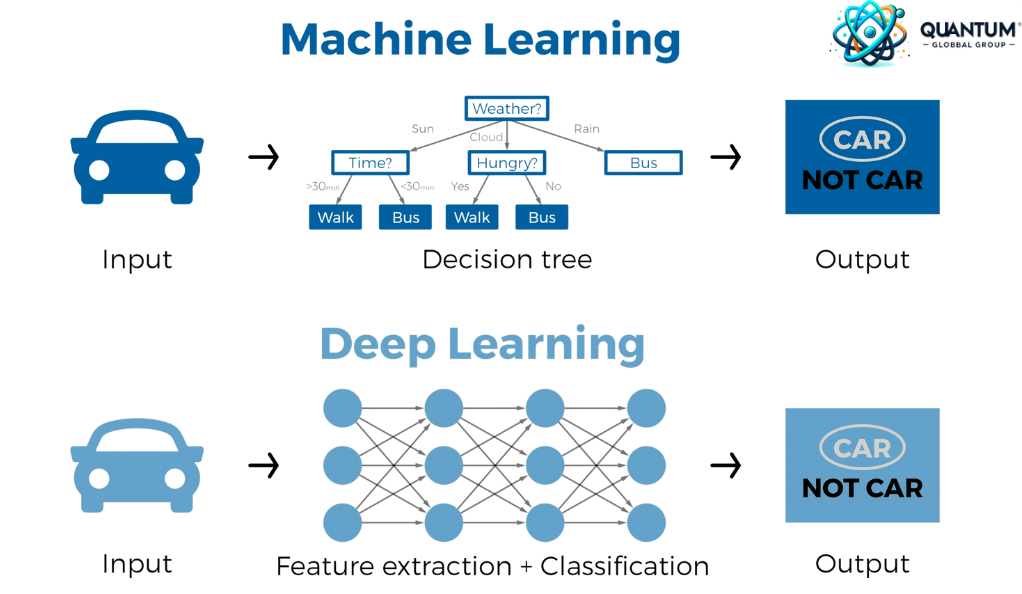
Comparison of Methodologies
Machine learning encompasses a variety of algorithms ranging from supervised and unsupervised learning to reinforcement learning. These algorithms require extensive feature engineering, where domain knowledge is used to create features that help the model make accurate predictions.
Deep learning, on the other hand, operates with neural networks and requires substantial amounts of data to perform well. The deep neural networks automatically extract features without the need for manual intervention, learning complex patterns from large datasets.
Data Requirements and Computational Needs
Machine learning models can perform well on smaller datasets, but they rely heavily on feature engineering. Deep learning models require large amounts of labeled data and substantial computing power to train effectively. The deep layers of neural networks necessitate advanced hardware and resources to process the complex computations involved in training.
Understanding the Depth and Complexity of Algorithms
The complexity of deep learning algorithms is significantly higher than that of most machine learning algorithms. Deep learning models consist of numerous parameters and layers, making them more intricate and capable of learning from vast amounts of data.
Machine learning models are generally simpler and can be trained on less powerful machines. They are more interpretable, meaning that their decisions can be more easily understood and explained.
Use Cases: Machine Learning in Action
Machine learning has a broad range of applications across various industries, demonstrating its versatility and effectiveness.
Real-world Applications of Machine Learning
In finance, machine learning algorithms are used for credit scoring, algorithmic trading, and fraud detection. In healthcare, they assist in disease identification, drug discovery, and patient care. Machine learning also powers recommendation systems, like those used by Netflix or Amazon, enhancing user experience through personalized content.
Benefits and Limitations
The benefits of machine learning include its ability to automate complex tasks, improve over time, and provide personalized experiences. However, it has limitations, such as its reliance on quality data and the need for manual feature engineering in many cases.
Use Cases: Deep Learning in the Real World
Deep learning has made significant strides in various fields, showcasing its ability to handle complex tasks and large volumes of data.
Exploration of Deep Learning Applications in Various Industries
Deep learning excels in computer vision, powering image recognition, object detection, and generation. It’s crucial for autonomous vehicles, healthcare image analysis, and enhancing retail customer experiences.
In natural language processing (NLP), deep learning impacts machine translation, sentiment analysis, chatbots, and virtual assistants, enhancing human-machine interactions. Additionally, it enables speech recognition for voice-activated assistants like Siri and Alexa, and improves gaming with realistic non-player characters (NPCs).
The Rise of Neural Networks in Image and Speech Recognition
- Convolutional Neural Networks (CNNs) image recognition, deep learning is the standard, surpassing traditional models. It autonomously learns spatial features from input images, excelling in tasks like classification, object detection, and image generation.
- Recurrent Neural Networks (RNNs) Variants like Long Short-Term Memory (LSTM) networks significantly enhance speech recognition. They excel in handling sequential data, making them ideal for tasks like speech and audio processing, which involve time-series data.
Challenges and Future Prospects
While deep learning models offer impressive capabilities, they come with challenges. They demand vast labeled data for training, consume significant resources due to complexity, and pose interpretability and accountability issues.
However, as technology advances, deep learning’s integration across industries will expand, driving innovation. Efficient training methods and larger datasets will likely further enhance these models’ capabilities.
The Future of Deep Learning and Machine Learning
The convergence of deep learning and machine learning is setting the stage for a future filled with technological breakthroughs and innovative applications.
Predictions and Trends for the Future
The integration of machine learning and deep learning is expected to continue, leading to more robust and versatile models. Transfer learning, where a model trained on one task is adapted for a different task, is likely to play a significant role in this integration.
The use of machine learning and deep learning in edge computing is another trend to watch. By processing data closer to where it is generated, we can reduce latency and improve efficiency, particularly in Internet of Things (IoT) applications.
The Convergence of Both Fields and Potential Breakthroughs
The blending of machine learning and deep learning is paving the way for models that combine the strengths of both fields. Machine learning’s interpretability and deep learning’s ability to handle large datasets and complex patterns are complementary, and their integration holds the promise of more accurate and efficient models.
In healthcare, this convergence could lead to more personalized and effective treatments. In manufacturing, it could result in smarter, more efficient production processes. Across industries, the potential for innovation and improvement is vast.
Conclusion
Understanding the key differences and applications of deep learning and machine learning is crucial for anyone looking to leverage these technologies. While they have distinct characteristics and are suited for different types of tasks, their integration holds the promise of transformative change across industries.
By harnessing the power of both machine learning and deep learning, we can unlock new possibilities and drive innovation, shaping a future that is smarter, more efficient, and more connected.

